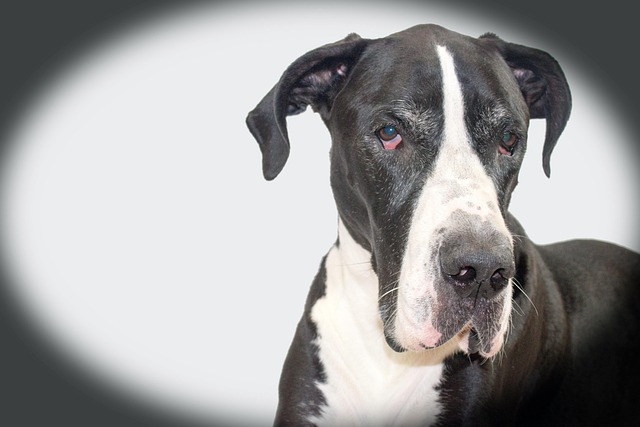
How can I tell if my dog's heatstroke is serious
Let’s be real: It’s a sticky August morning in Los Angeles, and you took your 2-year-old Golden Retriever, Max, for a walk a little later than usual
If you’re a new dog parent in the US—maybe you’re in your California apartment, watching your 18-month-old Bichon Frise, Bella, turn away from her favorite crunchy kibble and wince when she chews a toy, then lift her lip to find brown spots on her back teeth—you’ve probably panicked and thought: Why is this happening? I feed her good food—how did she get tooth decay? It’s a common, stressful question, but dog tooth decay usually comes from small, easy-to-miss habits, not just “bad food.” Let’s break down the reasons, what you can do about it, and how this fits with local pet rules.
First, let’s keep the science simple: Dog tooth decay starts with plaque—a sticky, invisible film of bacteria that forms on teeth every time your pup eats. When plaque mixes with leftover food bits (from kibble, treats, or even table scraps), it turns into acid that eats away at their tooth enamel (the hard outer layer, like a protective shell). If you don’t brush or scrape that plaque off, it hardens into tartar—a crusty brown layer that’s impossible to remove at home. Tartar keeps the acid close to the tooth, eventually eating through the enamel and causing cavities (decay). Take Jake, a first-time owner in Texas: He gave his Beagle, Cooper, lots of sweet potato treats (thinking they were “healthy”) and never brushed his teeth. After a year, Cooper had tartar buildup and a small cavity—his vet explained the treats had hidden sugar that fed the plaque.

Here’s how to fix the root causes and prevent more decay, step by step: Start by cutting back on sugary or starchy treats (even some “healthy” ones like dried fruits have too much sugar). Swap them for dental-friendly options: freeze-dried chicken, carrot sticks, or dog-specific dental chews (look for ones approved by the Veterinary Oral Health Council). Next, brush their teeth daily—use a dog-specific toothbrush and toothpaste (human toothpaste has fluoride, which is toxic to dogs!). Make it a positive routine: Sit on the floor with your pup, give them a tiny treat before brushing, and gently scrub their back teeth (where decay hits most) in small circles. If they squirm, pause and give another treat—never yank their mouth open or scold them. Punishment will make them fear teeth time, and US animal welfare norms strictly ban it—positive reinforcement is the only way to build trust here. For apartment living (common in NYC or Chicago), keep a toothbrush and treats near your couch—brushing while you watch TV makes it easy to remember.
Now, let’s tie in rules and community habits that matter. Every US state requires core vaccines (distemper, parvovirus)—while dental care isn’t a legal mandate, regular vet visits (mandatory for vaccine updates) should include dental checkups. Skipping these could mean missing early decay, and in states like Florida or New York, neglecting your dog’s oral health might lead to welfare checks. When you take your dog for walks (even after a dental cleaning), always clean up their poop—cities from Seattle to Boston have fines up to $300 for leaving waste, and it keeps shared spaces healthy. If you live in an apartment, store treats in airtight containers to avoid attracting pests (which can also spread bacteria near your pup’s food). And when visiting dog parks, don’t share treats with other dogs—you don’t know their diet or dental health, and it’s polite to stick to your own pup’s routine.
Dog tooth decay isn’t a sign you’re a “bad owner”—it’s a fixable issue. With small changes to treats, daily brushing, and follow-through on local rules, you’ll get Bella (or Cooper) back to crunching kibble happily—and keep their teeth healthy for years.

Let’s be real: It’s a sticky August morning in Los Angeles, and you took your 2-year-old Golden Retriever, Max, for a walk a little later than usual

You're enjoying a summer afternoon at the park when you notice your dog has stopped panting and appears disoriented - their gums are bright red

Let’s paint the picture: You’re in your Denver apartment, watching your 4-year-old Boston Terrier, Ruby, plop down mid-play session with her favorite toy

Many dog owners notice their pets nails seem shorter after regular walks,but how much does this daily activity actually help?The answer depends on where you walk—concrete sidewalks or asphalt streets gently file nails as a dog's paws hit the ground

Most dog owners notice their pup scooting across the carpet at some point, but few connect it to impacted anal glands. These small sacs near a dog’s rectum secrete a scent for marking territory

Most vets agree that regular dog teeth cleaning is key to avoiding painful dental issues later. For healthy adult dogs, a professional cleaning at the vet’s office every 12 to 18 months usually works well.